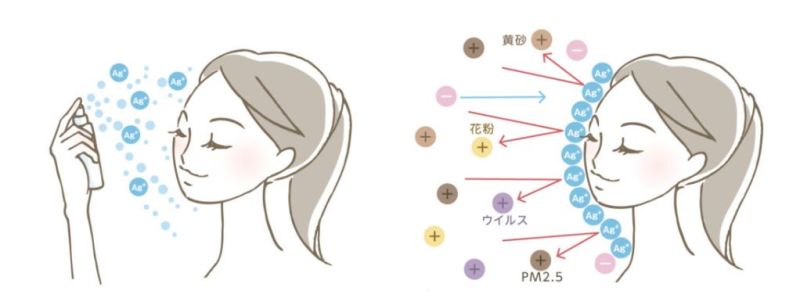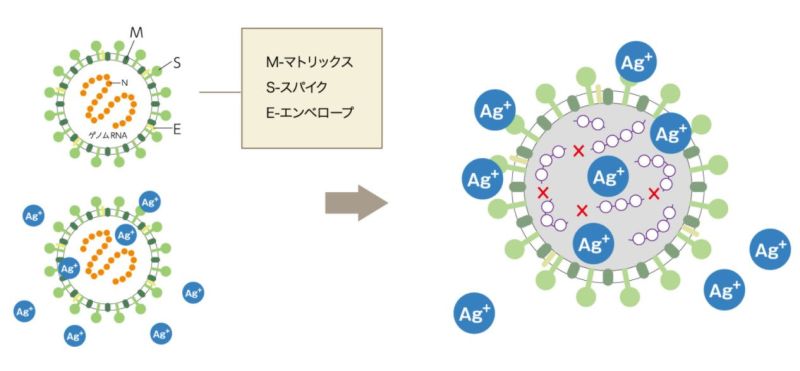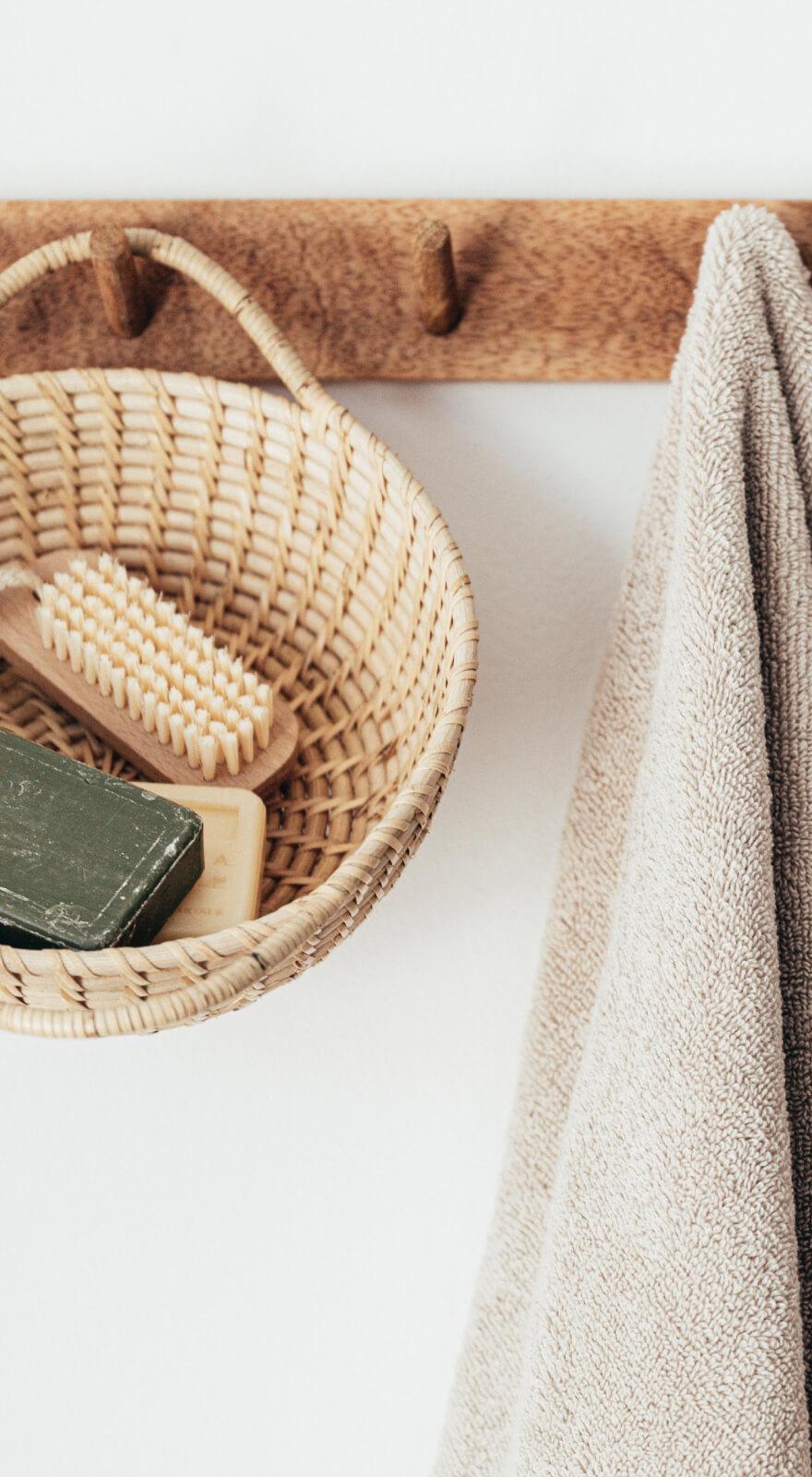Knowde Enhanced TDS
Identification & Functionality
- Cosmetic Ingredients Functions
- Technologies
- Product Families
Features & Benefits
- Benefit Claims
- Labeling Claims
Applications & Uses
- Applying Ag-P water to the Skin


- Pm 2.5 and Hay Fever Measures
By applying Ag-P water to the skin, ag+ veils are worn, and it is considered that positive ion substances such as PM2.5 and pollen are repulsed. In addition, it can be expected to adsorb negative ion substances and suppress invasion from the nose and mouth. Furthermore, since the antibacterial effect is high, infection prevention from bacteria can be expected.
Properties
- Physical Form
- Appearance
- Colorless to light yellow, odorless liquid (good stability)
- Typical Properties
| Value | Units | Test Method / Conditions | |
| Recommended Amount of Formulation | 5~50 | % | - |
Technical Details & Test Data
- Test Method
20 g of specimens are taken in a single steril bottle and 1% (0.2 ml) of test bacteria solution is inoculated. The inoculated specimen was preserved and the number of live bacteria was measured on days 7, 14, and 21.
Bacterial and fungal challenge test in Ag-P water 10% (combined with BG5%) O/W emulsified.
Bacterial mixture
E.coli: E. coli
P.aeruginosa: Pseudomonas aeruginosa
S.aureus: Staphylococcus aureusFungal mixed fungus
A.niger: Black mold
C.albicans: Candida
P.citrinum: blue mold
A.pullulans: Black yeastSpecimen Inoculation bacteria Number of inoculated bacteria 7th 14th 21st Ag-P water 10% Bacteria mixed bacteria 2.4×108 1.0×102 <101 <101 Compounding Cream pH6.9 Fungal mixed bacteria 2.7×107 2.0×101 <101 <101 - Test Method
20 g of specimens are taken in a single steril bottle and 1% (0.2 ml) of test bacteria solution is inoculated. The inoculated specimen was preserved and the number of live bacteria was measured on days 7, 14, and 21.
Challenge test of bacteria and fungi in Ag-P water 10% (2% combined with pentylene glycol) lotion
Bacterial mixture
E.coli: E. coli
P.aeruginosa: Pseudomonas aeruginosa
S.aureus: Staphylococcus aureusBacterial mixture
A.niger: Black mold.
C.albicans: Candida.
P.citrinum: Blue mold.
A.pullulans: Black yeast.Test results 1 and 2
The challenge test showed the good result in the Ag-P water 10% compound formulation. The synergistic effect was recognized by the combination combination of BG and pentylene glycol. (Challenge test is required for each prescription)
Specimen Inoculation bacteria Number of inoculated bacteria 7th 14th 21st Ag-P water 10% Bacteria mixed bacteria 1.6×108 <101 <101 <101 Compound lotion Fungal mixed bacteria 2.4×107 1.3×103 <101 <101 - Test Method
Sterilization Potency Test
Test method
The number of live bacteria per hour was measured by inoculated with Propionibacterium acnes, stag beetle co., Ltd. Corynebacterium, and tooth decay bacteria (S. mutans) in 10% diluted ag-P water. The measurement of the number of live bacteria is based on the agar medium mixing method (anaerobic culture).
Test Results
Acne, corinebacterium and tooth decay bacteria were generally killed by an hour-long action.
Specimen Inoculation bacteria Number of inoculated bacteria 1 hour 3 hours 5 hours 8 hours Ag-P water 10% diluted water Acne bacteria 4.2×106 <101 <101 <101 <101 Corynebacterium 1.2×106 9×101 <101 <101 <101 Specimen Inoculation bacteria Number of inoculated bacteria 1 min 5 mins 60 mins Ag-P water 10% diluted water Tooth decay bacteria 1.8×106 4.9×105 6.9×103 <101
- Sterilization Potency Test
Test Method
Ag-P water 10% diluted water was inoculated with Candida albicans and enterohemorrhagic Escherichia coli O-157 to measure the number of live bacteria per hour. The number of live bacteria is measured by GPLP Agar Medium (C.albicans), SCDLP Agar Medium (E.coli O-157), and mixed method.
Specimen Inoculation bacteria Number of Inoculated bacteria 10 min 1 hour 3 hour 8 hour Ag-P water 10% diluted water C.albicans 1.4×106 <101 <101 <101 <101 E.coli O-157 1.1×106 2.2×105 8<101 <101 <101 Test Results
Candida bacteria were killed for 10 minutes and O-157 was killed for an hour. It was also found that the effect continued after 8 hours.
- Coronavirus Inactivation Test
Test Method
Testing institution: kitasato environmental science center test was conducted using feline intestinal coronavirus of the same structure as the new coronavirus.
Test Results
After 5 hours, 97. It became data to inactivate 9% coronavirus as described above, it has a long-term antiviral action, and can be expected to be applied to a highly safe and persistent formulation.
Specimen
Inoculator virus
Number of inoculations 0 points
5 hours later
Rate of change
Ag P water 50% aqueous solution
Feline enteric coronavirus, WSU79-1683
130,000
2,700
97.90%
Subject
Feline enteric coronavirus, WSU79-1683
130,000
180,000
3996
- Coronavirus structure and Ag+ mechanism of action.
Coronavirus is covered with an envelope of lipid bilayers. Ag-P water (Ag+) is thought to have binds to the S (spike) part of the protein and inactivated the coronavirus.
- Coronavirus structure and Ag+ mechanism of action


